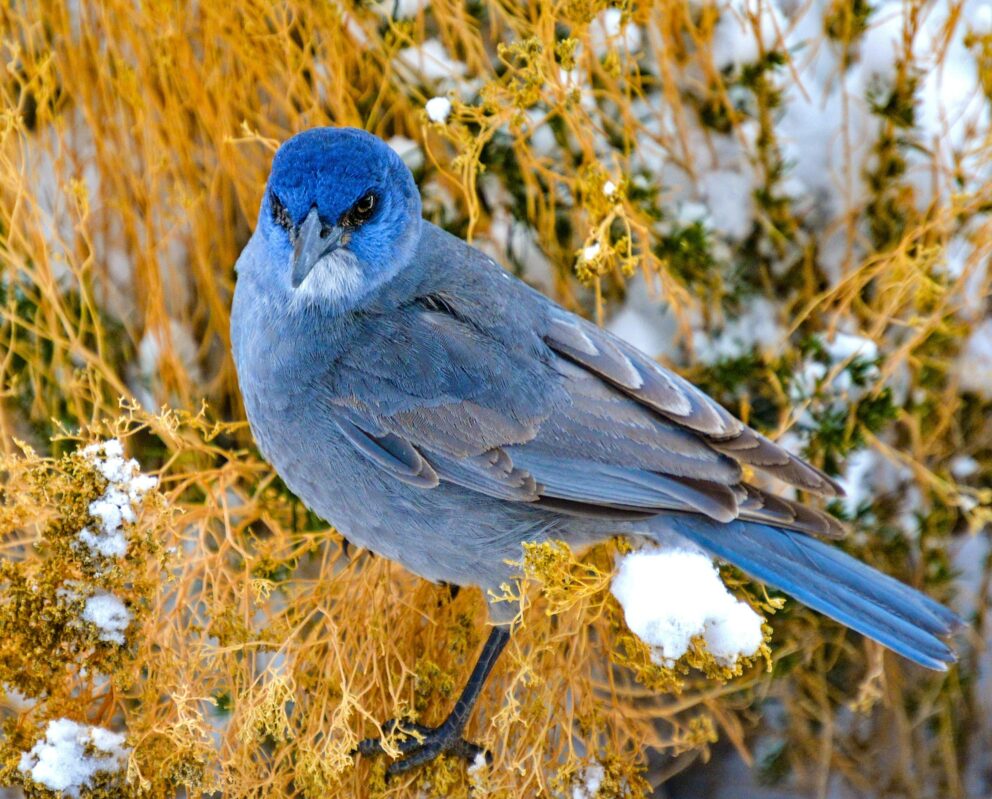- SCIENTIFIC NAME
- Gymnorhinus cyanocephalus
- CLASSIFICATION
- Bird
- LIFE SPAN
- 4-14 Years
- SIZE
- 10-12” | 0.18-0.25lbs
- STATE CONSERVATION STATUS
-
- Priority Species
- Threatened
- FEDERAL CONSERVATION STATUS
- Vulnerable
- GAME STATUS
- Non-Game
- GAME TYPE
- None
- Washoe
- Humboldt
- Pershing
- Churchill
- Mineral
- Lyon
- Douglas
- Carson City
- Storey
- Elko
- Lander
- Eureka
- White Pine
- Esmeralda
- Nye
- Lincoln
- Clark
Habitat & Range
Pinyon Jays can be found throughout Nevada in pinyon-juniper forests. They can also be found in other pine forests. Additionally they occupy sagebrush and scrub habitat.
- Cold desert shrubland and sagebrush
- Pinyon juniper forests
- Upland Forests
Threats
- Habitat Degradation
- Habitat Loss
- Wildfires
Natural History
True to their corvid nature, Pinyon Jays are social and smart songbirds. They fly in large groups, sending flashes of blue across their Pinyon habitats. Jays forage in trees or on the ground for pinyon and other pine seeds, grains, insects, lizards, and even bird eggs and hatchlings. Even with a wide diet range, they will stick primarily to pinyon pine seeds. Abundance of Pinyon pine seeds also drives their decision for choosing a nest location. They may choose Pinyon pines, Ponderosa pines, or juniper bushes to nest in. The male and female cooperate in nest-building, with the male being responsible for delivering nest materials, and the female responsible for constructing the nest. A pair will typically mate for life, but find another mate if one dies. Similar to other jay species, they form complex family structures in a behavior called cooperative breeding. Young jays will stay and help the parents, feeding young or caching seeds within their territory. Pinyon Jays have incredible spatial awareness, and can cache a large supply of seed they gather. Due to the unique need to nest near their food supply, Pinyon Jays face many threats to their habitat as Pinyon-juniper forests decrease.
Fun Facts














